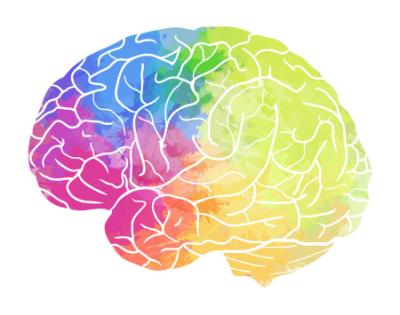

Taylor is an outpatient therapist based in the Bismarck office, who is passionate about helping individuals with disabilities and those profoundly impacted by trauma. With a strong focus on meeting clients where they are in their unique journeys, Taylor utilizes a variety of approaches, including Cognitive Behavioral Therapy (CBT), Rational Emotive Behavioral Therapy (REBT), and trauma-informed care, to effectively support personal growth and resilience. Additionally, Taylor incorporates Polyvagal Theory and sensory-focused interventions to better understand and treat the effects of stress on clients’ overall well-being.
Creating sensory-friendly spaces in counseling can be highly beneficial, particularly for clients with sensory sensitivities or conditions like Autism, ADHD, and PTSD. These spaces go beyond just the products within a room; entire environments can be designed for sensory comfort, catering to all eight senses—sight, hearing, taste, touch, smell, vestibular, proprioception, and interoception. Since sensory preferences vary, there’s no “one-size-fits-all” approach, but the good news is that creating a sensory-friendly environment doesn't require a complete overhaul. Many adjustments are simple and can be made gradually, helping clients feel more at ease and improving the effectiveness of counseling. Flexibility and a willingness to adapt to each client’s unique needs are key.
1. Sight (Visual Input)
- Lighting: Use soft, adjustable lighting to reduce glare. Natural light or dimmer switches are ideal, and warm tones work better than cool or fluorescent lighting.
- Color Scheme: Choose calming colors like soft blues, greens, or neutrals. Avoid bright, overstimulating shades.
- Visual Clutter: Keep the space organized and free of distractions. Simple, soothing artwork or nature scenes are a good touch.
2. Sound (Auditory Input)
- Acoustic Control: Use soft materials like carpets, curtains, and upholstered furniture to reduce noise. Soundproofing can help block out external sounds.
- Background Music: Play soft music or nature sounds at a low volume, ensuring it’s easy to adjust or turn off if needed.
- Noise-Canceling Headphones: Provide or encourage the use of noise-canceling headphones for clients sensitive to sound.
3. Touch (Tactile Input)
- Furniture: Offer comfortable, supportive furniture with soft fabrics. Include textures like soft pillows or plush blankets.
- Temperature: Keep the room comfortable and provide blankets or fans to adjust to individual needs.
- Sensory Tools: Offer tactile items like stress balls, fidget toys, or textured fabrics to those who need tactile stimulation.
4. Taste (Gustatory Input)
- Calming Options: Offer calming snacks like sweets, hard candies, or chocolate based on client preferences.
- Alerting Options: For clients who need alerting stimuli, consider crunchy, chewy, sour, spicy, or cold options like gum, lemon candies, or ice water.
5. Smell (Olfactory Input)
- Neutral Scents: Use unscented cleaning products and avoid strong perfumes or air fresheners.
- Pleasant Aromas: Opt for mild essential oils like lavender or chamomile in diffusers. Keep scents subtle and non-intrusive.
6. Proprioception (Sense of Muscle and Joint Movement)
- Comfortable Seating: Choose seating with good support and cushioning. Weighted blankets or pillows can help with sensory regulation.
- Movement Opportunities: Include gentle movement options, such as rocking chairs or stability balls, if appropriate.
7. Vestibular (Balance and Orientation in Space)
- Stability: Ensure the space is stable and avoid sources of motion that could cause discomfort. Minimize sudden or jerky movements.
- Gentle Movement: If movement is part of therapy, make it gentle and predictable. Tools like balance balls or rocking chairs can enhance comfort.
8. Interoception (Awareness of Internal Body States)
- Comfort Measures: Provide access to water, soft fabrics, or heat packs. Make sure the room temperature is adjustable.
- Mindfulness Tools: Include resources for mindfulness or grounding techniques, such as guided imagery or breathing exercises, to help individuals tune into their internal states.
Incorporating these sensory-friendly elements into counseling spaces can create a more comfortable and supportive environment, helping clients feel at ease and enhancing the therapeutic process.